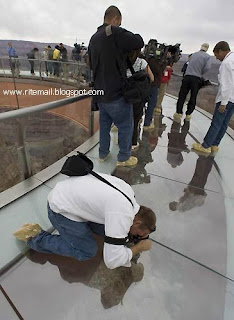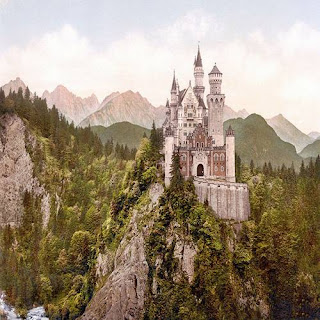My husband is Software Engineer by profession, I love him for his steady nature and I love the warm feeling when I lean against his broad shoulders.
Two years of courtship and now, five years into marriage, I would have to admit, that I am getting tired of it. The reasons of me loving him before, has now transformed into the cause of all my restlessness.
I am a sentimental woman and extremely sensitive when it comes to a relationship and my feelings. I yearn for the romantic moments, like a little girl yearning for candy. My husband is my complete opposite; his lack of sensitivity, and the inability of bringing romantic moments into our marriage has disheartened me about LOVE.
One day, I finally decided to tell him my decision, that I wanted a divorce.
"Why? " he asked, shocked.
"I am tired. There are no reasons for everything in the world !" I answered.
He kept silent the whole night, seemingly in deep thought. My feeling of disappointment only increased. Here was a man who was not able to even express his predicament, so what else could I expect from him?
And finally he asked me: "What can I do to change your mind?"
Somebody said it right... It's hard to change a person's personality, and I guess, I have started losing faith in him.
Looking deep into his eyes I slowly answered: "Here is the question. If you can answer and convince my heart, I will change my mind.
Let's say, I want a flower located on the face of a mountain cliff, and we both are sure that picking the flower will cause your death. Will you do it for me?"
He said: " I will give you your answer tomorrow...." My hopes just sank by listening to his response.
I woke up the next morning to find him gone, and saw a piece of paper with his scratchy handwriting underneath a milk glass, on the dining table near the front door, that goes....
My dear, "I would not pick that flower for you, but....please allow me to explain the reasons further.....
This first line was already breaking my heart. I continued reading.
"When you use the computer you always mess up the Software programs, and you cry in front of the screen. I have to save my fingers so that I can help to restore the programs.
You always leave the house keys behind, thus I have to save my legs to rush home to open the door for you.
You love traveling but always lose your way in a new city. I have to save my eyes to show you the way.
You always have the cramps whenever your "good friend" approaches every month. I have to save my palms so that I can calm the cramps in your tummy.
You like to stay indoors, and I worry that you will be infected by infantile autism. I have to save my mouth to tell you jokes and stories to cure your boredom.
You always stare at the computer, and that will do nothing good for your eyes. I have to save my eyes so that when we grow old, I can help to clip your nails and help to remove those annoying white hairs. So I can also hold your hand while strolling down the beach, as you enjoy the sunshine and the beautiful sand...and tell you the colour of flowers, just like the colour of the glow on your young face...
Thus, my dear, unless I am sure that there is someone who loves you more than I do... I could not pick that flower yet, and die ... "
My tears fell on the letter, and blurred the ink of his handwriting. .. And as I continue on reading... "Now, that you have finished reading my answer, and if you are satisfied, please open the front door for I am standing outside bringing your favorite bread and fresh milk...
I rushed to pull open the door, and saw his anxious face, clutching tightly with his hands, the milk bottle and loaf of bread....Now I am very sure that no one will ever love me as much as he does, and I have decided to leave the flower alone...
That's LIFE, and LOVE. When one is surrounded by love, the feeling of excitement fades away, and one tends to ignore the true love that lies in between the peace and dullness.
Love shows up in all forms; even in very small and cheeky forms. It has never been a model. It could be the dullest and most boring form ...
Flowers, and romantic moments are only used and appear on the surface of the relationship. Under all this, the pillar of true love stands... AND THAT'S LIFE
Two years of courtship and now, five years into marriage, I would have to admit, that I am getting tired of it. The reasons of me loving him before, has now transformed into the cause of all my restlessness.
I am a sentimental woman and extremely sensitive when it comes to a relationship and my feelings. I yearn for the romantic moments, like a little girl yearning for candy. My husband is my complete opposite; his lack of sensitivity, and the inability of bringing romantic moments into our marriage has disheartened me about LOVE.
One day, I finally decided to tell him my decision, that I wanted a divorce.
"Why? " he asked, shocked.
"I am tired. There are no reasons for everything in the world !" I answered.
He kept silent the whole night, seemingly in deep thought. My feeling of disappointment only increased. Here was a man who was not able to even express his predicament, so what else could I expect from him?
And finally he asked me: "What can I do to change your mind?"
Somebody said it right... It's hard to change a person's personality, and I guess, I have started losing faith in him.
Looking deep into his eyes I slowly answered: "Here is the question. If you can answer and convince my heart, I will change my mind.
Let's say, I want a flower located on the face of a mountain cliff, and we both are sure that picking the flower will cause your death. Will you do it for me?"
He said: " I will give you your answer tomorrow...." My hopes just sank by listening to his response.
I woke up the next morning to find him gone, and saw a piece of paper with his scratchy handwriting underneath a milk glass, on the dining table near the front door, that goes....
My dear, "I would not pick that flower for you, but....please allow me to explain the reasons further.....
This first line was already breaking my heart. I continued reading.
"When you use the computer you always mess up the Software programs, and you cry in front of the screen. I have to save my fingers so that I can help to restore the programs.
You always leave the house keys behind, thus I have to save my legs to rush home to open the door for you.
You love traveling but always lose your way in a new city. I have to save my eyes to show you the way.
You always have the cramps whenever your "good friend" approaches every month. I have to save my palms so that I can calm the cramps in your tummy.
You like to stay indoors, and I worry that you will be infected by infantile autism. I have to save my mouth to tell you jokes and stories to cure your boredom.
You always stare at the computer, and that will do nothing good for your eyes. I have to save my eyes so that when we grow old, I can help to clip your nails and help to remove those annoying white hairs. So I can also hold your hand while strolling down the beach, as you enjoy the sunshine and the beautiful sand...and tell you the colour of flowers, just like the colour of the glow on your young face...
Thus, my dear, unless I am sure that there is someone who loves you more than I do... I could not pick that flower yet, and die ... "
My tears fell on the letter, and blurred the ink of his handwriting. .. And as I continue on reading... "Now, that you have finished reading my answer, and if you are satisfied, please open the front door for I am standing outside bringing your favorite bread and fresh milk...
I rushed to pull open the door, and saw his anxious face, clutching tightly with his hands, the milk bottle and loaf of bread....Now I am very sure that no one will ever love me as much as he does, and I have decided to leave the flower alone...
That's LIFE, and LOVE. When one is surrounded by love, the feeling of excitement fades away, and one tends to ignore the true love that lies in between the peace and dullness.
Love shows up in all forms; even in very small and cheeky forms. It has never been a model. It could be the dullest and most boring form ...
Flowers, and romantic moments are only used and appear on the surface of the relationship. Under all this, the pillar of true love stands... AND THAT'S LIFE
6:33 AM | 2
comments | Read More
























































